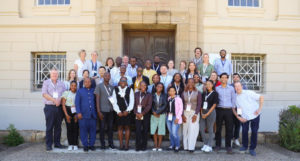Climate change and globalisation raise risks from crop pests

Climate change and globalisation are driving a surge in threats to crops from insects and mites, researchers say.
Rising temperatures are enabling pests to move further from the equator and to higher ground, while increased trade is accelerating the spread of invasive species.
Meanwhile, intensification of agriculture is weakening natural pest control, making outbreaks more frequent and severe.
The research team – including the universities of Hebei and Exeter, and the Chinese Academy of Sciences – call for urgent action to address threats to crop production.
“We need better pest monitoring, predictive models, and climate-smart management strategies to safeguard staple crops such as wheat, rice, maize and soybean from increasing pest risks,” said co-author Professor Dan Bebber, from the University of Exeter.
“About 40% of global crop production is currently lost to pests and diseases, creating a major challenge for global food security.
“We reviewed evidence on the impact of crop pests and found that overall risks are increasing – with greater numbers of pests, more annual generations, longer activity seasons and the area inhabited by pest species increasing.
“This is mainly due to global warming reducing cold limitations for pests, and declining biodiversity reducing biocontrol (predators killing pests).”
The paper also notes that extreme climate events, such as heatwaves and droughts, sometimes trigger unexpected pest outbreaks.
The findings suggest that crop pests are likely to increase most in high latitudes – temperate places further from the equator where crops such as wheat, maize and rice are grown.
The paper also includes specific strategies for crop and pest management in response to ongoing and projected changes.
The paper, published in the journal Nature Reviews Earth & Environment, is entitled: “Crop pest responses to global changes in climate and land management.”



